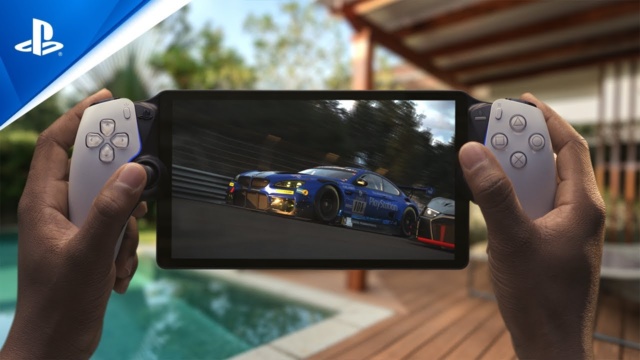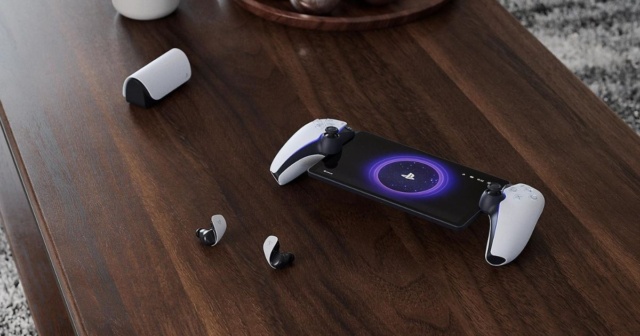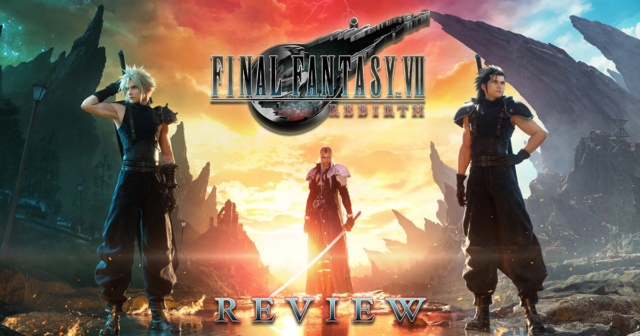Review: PlayStation Portal is Marvelous Despite Flaws

Gaming is one of those things that I have always loved doing in some capacity, however as I’ve grown older, it’s become harder to find the time. Back when I was in college, I could get lost for hours in a video game, staying up way too late and going to class tired and cranky. However, nowadays, sleep is a priority, life continues to get in the way, and time with family seems to trump the hours of isolation with a screen and a controller. And yet, every year tons of games come out that I eagerly want to play. Thankfully, Sony has found a solution for this rather unique first-world problem that I experienced with the release of their new PlayStation Portal.
Initially announced back in May of last year, Sony released their newest addition to the PlayStation 5 system late last year and was at the top of my Christmas list. This remote player seemed like it was going to revolutionize gaming for people like me. No longer would we have to choose between watching a film or show with the family or playing video games, because with the PlayStation Portal, we can do both.
Is the PS Portal worth it, or is your money better spent on something else? Let’s explore everything the PS Portal has to offer.
The PlayStation Portal’s design
When I initially pre-ordered the PlayStation Portal from their website, I didn’t realize just how big or heavy the new remote-playing system was. So when they arrived at my house in November, and once again when I opened it on Christmas Day, I was shocked, to say the least. These PS Portals are large; with them being significantly bigger and heavier than a Nintendo Switch.
However, that isn’t a tick against the Portal, but instead a plus. At times, when I’m playing the Switch, I worry that I’m going to break the system or the controllers attached to them. It can feel wimpy at the joints where the controllers slide into the base, which might snap with one wrong movement.
However, the PS Portal is a single unit, with hand-held controller components attached to the screen and processing system. The controller is the same shape and size as the regular PS5 controllers, except instead of a touchpad, there’s an 8-inch LCD screen, which features 1080 resolution and 60fps.
While keeping the size of the controller relative to what players are used to, combined with the screen, the PlayStation Portal is almost as long as my MacBook Pro. Again, this is not a bad thing, although it was just much larger than I initially anticipated. My suggestion here is to also purchase a protective carrying case of some kind, as this is the best way to keep it safe and stored when not using it.

The PlayStation Portal is cohesive with the rest of the PS5 collection, with the sleek, futuristic design that sets it apart from other systems for a variety of reasons. It doesn’t feel too clunky or obtuse in your hands, which is essential for any portable device you use daily.
Functionality, battery life, and gameplay on the PS Portal
The first bump in the road with the PlayStation Portal was some difficulties connecting it to the PS5 system. The PS Portal functions through remote play, meaning that the system has to be on, and the remote has to be connected through Wi-Fi. This isn’t necessarily a problem once it’s been initially connected to the PS5, but both I and my nephew struggled for over half an hour to get the ball rolling.
It’s possible that because both of us were attempting to connect our systems, it was causing a slowdown or a mix-up. I’m not entirely sure, but the initial setup was a headache.
Part of the problem as well is that the Portal needs to be relatively close to the console to do so. This is something necessary every time I boot up the PS Portal to use it, with me standing in front of the system like a child waiting at the front door for their friend to arrive for a play date.
Most times, after that first time, it connects with relative ease, however, there are some instances where the circle on the screen just spins over and over. Restarting the PS Portal tends to fix that, so there is an easy workaround if you find it’s struggling to connect to the console.
Once the remote player is up and running, it functions just like that of a regular remote. Sony has copied the functionality aspect practically one-for-one, and for those pieces that they haven’t, they’ve developed other solutions. When connected, the PS Portal’s screen replicates that of a television, with the same menus and structure that you’ve come to expect from playing your PS5.
It’s not a watered-down replacement for the actual system, as the PS Portal becomes the system. From that point on, I was off to the races, finally beating the Avengers game that I’ve been working on for years.
Playing on the PS Portal felt amazing. From a practical standpoint, having a separate screen that still plays high-quality games is a big deal. No longer do I have to fight with my family for the television, we can all live in harmony.
As well, with the Portal, you’re not sacrificing quality for convenience. The graphics are still superb, and the controller feels nice and balanced in your hands. The screen is small relative to a television screen, but I never struggled to see what was going on or read the subtitles on the screen.

The remote player also features the traditional dual shock vibrations that I’ve come to expect from other PlayStation remotes, although it feels more intense as it shutters through the entire system. Intending to create the ultimate experience for players, the Portal also has dual internal speakers, that output at high quality and levels. Even at the lowest setting, I could hear everything crystal clear. There’s also a headphone jack, which is essential for gaming online with your friends.
The touchpad is one of the missing components from the standard PS5 controller, which is used frequently in many of the games I’ve played. Nowhere in the instructions could I find out how to access it and had to turn to Youtube for help. Thankfully that function is present on the PlayStation Portal by tapping on the screen, which brings up a touchpad-like box that you can use in much the same way as the touchpad on the controller.
The battery life on this remote player was rather good in my opinion. I would get about seven hours of gameplay for every charge, which takes about two hours for a full charge. There were times that I would play with it plugged in, so as to continue playing without interruption. The battery does suffer when it comes to holding its charge while off. It seems like the Portal drains quicker than other devices when on standby or shut off completely, which means that it has to charge more frequently to be ready for action.
Being that the PS Portal is still so new, there are a few bugs that still need to be worked out. One of the problems that both my nephew and I kept running into was lag. There are periods, be it from the Wi-Fi or from two Portals running at the same time, that the screen becomes glitchy, and it’s impossible to work out what is happening.
The game itself is still running, which means that things are happening, but responses are slow. As a result, I died a few times in the game and would have to start that section over. This was the biggest challenge I’ve experienced from the PS Portal, and I hope there’s a patch coming soon. That being said, it’s not every single time I use it and many times it happens just once or twice and then straightens itself out.
As well, the PS Portal is not 100 percent mobile, such as the Nintendo Switch. It has to be anchored to a console through Wi-Fi, meaning that you’re stuck within the location of your system. It would be cool in future iterations of the Portal if we were able to somehow connect to our PS5s from anywhere in the world, making the PlayStation completely mobile.
For those who are looking for streaming on the Portal, this remote player is for gaming only. Streaming the likes of Netflix or Disney+ isn’t supported, although perhaps there’s room to grow and with patches and updates, the Portal could come to support this function.
Final thoughts on the PlayStation Portal
Regardless of the price tag and the few issues I experienced, the PlayStation Portal is an absolute win in my book. The good outweighs the bad, and the ease with which I can play games I’ve wanted to for so long without disrupting the household as much makes anything negative worth it.
If you’ve been considering picking up a PlayStation Portal, my suggestion is to do it. Freeing up your screen, in which to watch a show or movie while you play your game, is enough of a reason to purchase one soon.
The PlayStation Portal is available now. Let us know on social media @mycosmiccircus or in The Cosmic Circus Discord your thoughts on the new remote system from Sony.
Review: Final Fantasy VII: Rebirth is Among the Franchises’ Best




